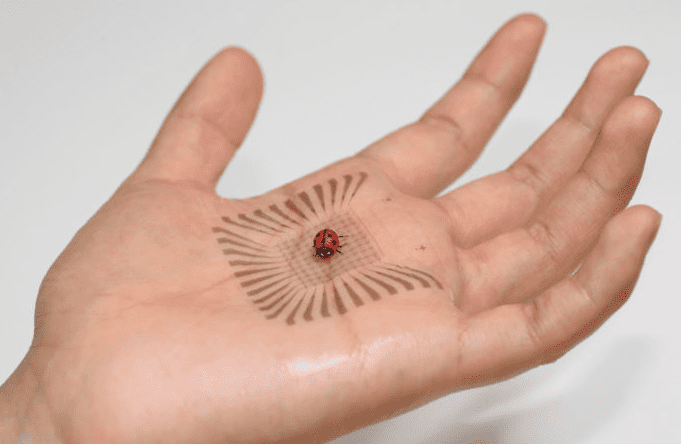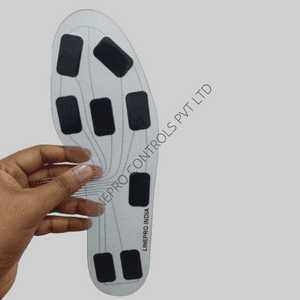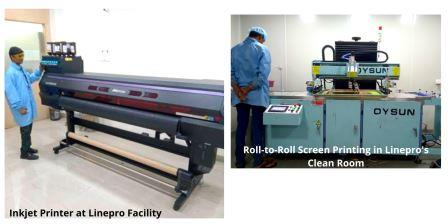
The rising demand for reliable, cost-effective, miniature and advanced printed electronics sensing devices or printed flexible sensors has led the sensor manufacturing industry away from traditional microelectronic fabrication processes and has made room for modern printing techniques. Standard printing processes are employed together using electronically functional inks to place the appropriate electronic components on a particular substrate.
Printed Flexible sensors developed through various printing techniques are expected to revolutionize the electronic sensor industry. Particularly in biomedical applications the use of flexible sensors has resulted in remarkable advances and are being increasingly utilized in our everyday lives. Their capability to be flexible and stretchable can allow the use of these sensors for surfaces that are curved and adapt to complicated geometries.
Medical applications
Biomedical printed flexible sensors promise to provide patients and doctors with unprecedented amounts of health data. It can offer immediate monitoring and diagnostics and is also utilized for various regular health examinations and tests. Here are some examples.
Tactile sensors can mimic human contact and, when in contact with objects they detect various parameters, including force, pressure and strain, vibrations, and torsion. Linepro developed Internet-of-Things (IoT) based tactile foot pressure in-sole sensors to determine the plantar pressure which is very relevant for healthcare as well as sports industry. The in-sole sensors facilitate real time dynamic and static pressure patterns within extremely short period and space.

Many fabrication techniques are being developed to create pressure tactile sensors. 3D printing technology is one of the most popular options due to its low price, simple, easy customization, and the ability to scale. These sensors are employed to treat non-invasive ailments, artificial skin, prosthetics as well as minimal access surgery, biomechanical analysis in addition to other things.

Temperature sensors are also used extensively in biomedical applications. To provide real-time temperature monitoring, IoT based printed flexible temperature sensors detect the change in electrical signal of the thermo sensitive material in response to a change in temperature. Polydimethylsiloxane (PDMS), an excellent thermal and electrical insulating polymer, is one of the most commonly used substrates in flexible temperature sensors. There are many other substrates that are employed, such as polyurethane and polyimide (PI) and biodegradable textiles like silk and cotton. Inkjet printing is commonly used to manufacture temperature sensors, but it’s not the only technique.
Electrochemical biosensors in the form of ‘tattoo sensors’ are also expected to play a critical role in continuous health monitoring. They are produced employing the standard printing techniques that were mentioned earlier, including gravure printing, screen printing, and inkjet printing. Screen printing is possibly the most widely used method due to its low price, strength and compatibility with all kinds of substrates.
Technological drivers for Printed Flexible Electronics
The adoption of flexible sensors for biomedical applications has a common denominator with flexible circuits in general. They have been made possible by advances in sensor materials as well as print fabrication techniques.
Printed Flexible Electronics Sensor materials
Substrate and an electrically active ink are two primary elements of a printed flexible sensor. A few of the most desirable and common characteristics of a substrate include its flexibility and its ability to be molded while retaining chemical and thermal stability. Substrates may be required to possess additional properties depending on the application. PI, thermoplastic polyurethane (TPU), polyethylene terephthalate (PET), PDMS and even paper are some of the common substrates used in the printing of flexible sensors. PDMS, in particular, is extensively used for biomedical devices including micro-fluids and sensors. It is biodegradable and non-toxic with high stretchability.
The ink used in the printing process is composed of main electrically functional element along with binders, additives and solvents. Metals, dielectrics or semiconductors can be used as functional elements depending on the requirements. Silver, in the form of nanoparticles or nanowires, is the most commonly used functional element. For better print quality, ink viscosity, wetting characteristics, surface tension and density must be considered.
There’s also a lot of research focusing on the development of bio-inks that can be designed in accordance with specific requirements. Conductivity, for instance, is essential in certain biomedical sensors, while support for cells is crucial in scaffolds.
Printing techniques
Printing processes are broadly divided into two main categories: impact and non-impact. The impact printing method is, as the name implies involves transfer of the ink from a patterned object to the substrate by physical contact. In contrast, the non-impact method utilizes nozzles for transferring the ink on the substrate, without the need for physical contact.
Screen printing is a method of printing by impact which involves the transfer of ink on the substrate via direct contact. Screen printing can print extremely flexible electronic sensors for a very low cost, and without any waste of material. Many screen-printed devices are screen printed within a relatively short time, due to its features like roll-to-roll production as well as ambient processing. Another method of impact printing is Gravure printing, which offers cost-effective production, rapid turnaround and top-quality printing. It’s a durable printing method that uses inks with low viscosity.
Flexographic Printing is an indirect printing technique that is able to handle an array of ink thicknesses and still maintain an unchanging resolution. It is a roll-to-roll printing method known for high quantity output. This method of printing isn’t well-known for creating printed sensors, and is being studied and developed regularly.
The inkjet printing process is an impact-free technique whereby a design can be printed by spraying droplet ink on the substrate, rather than using any kind of image-bearing device. Many biomedical sensors were developed with this printing method. One intriguing application under investigation is a smart bandage or skin patch to treat chronic wounds, capable constantly detecting and delivering oxygen.
Bioprinting, though mainly focused on tissue engineering, has been used in the development of biosensors that are printed. Researchers have invented a variety of sensors using this technology, including strain sensors, tactile sensors, sensors that are capable of detecting motions from fingers and 3D conductive sensors, and many more.
Furthermore, 3D printing techniques are also being used for the manufacturing of flexible sensors. Highly complex 3D structures can be easily fabricated by using one of the many available 3D printing technologies. Some of the most common 3D printing technologies are based on photopolymerization, sheet lamination, materials extrusion, binder jetting, direct energy deposition and power-bed fusion.
Conclusion
While many printing technologies are performing well enough for manufacturing high-quality flexible sensors, there are still many challenges to overcome. Many leading innovative manufacturing institutes like NextFlex, HI-RESPONSE, MADRAS and Linepro consortiums are working with leading scientists and engineers to overcome various challenges including parameter standardization and process environment control.
Printed flexible sensors are expected to follow an exponential growth pattern and by 2023, the wearable technology market is expected to reach $302.3 million. The adoption of innovative printing techniques for the manufacturing of flexible sensors is expected to revolutionize the biomedical industry in the coming years.
Linepro is rapidly developing newer technologies in field of printed electronics. From printed heaters to force sensing resistors or pressure sensors and wearable like skin patches and heating apparels, Linepro is ready to take up and succeed in any customized printed electronics project. For any consultation on Printed Electronics, we are ready to help you any time! Feel free to share your project details and we shall start guiding you.


